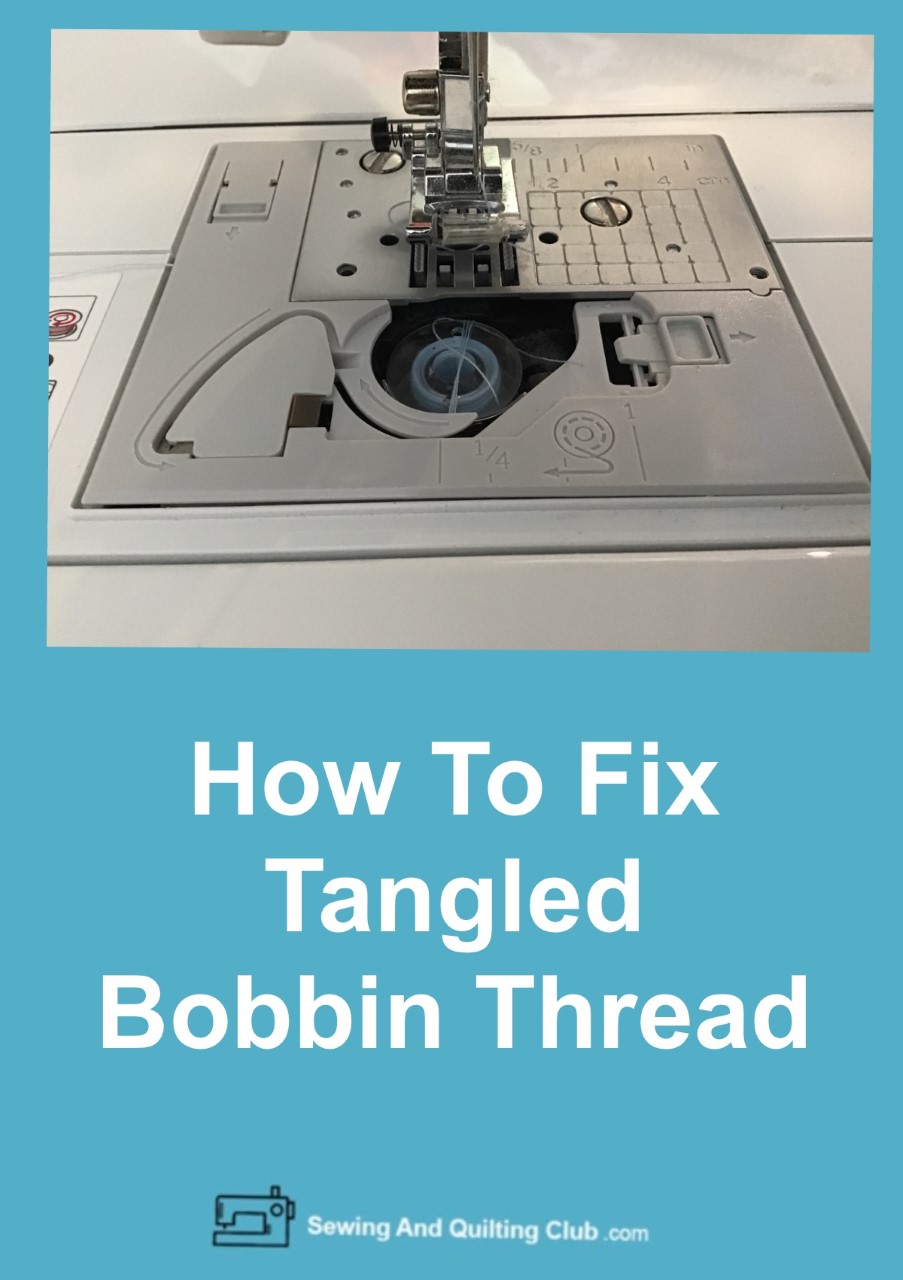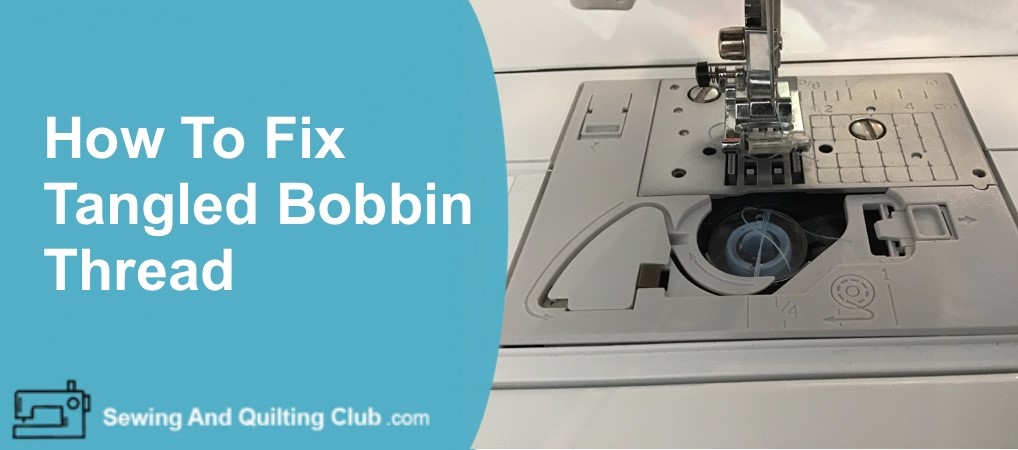How To Fix Tangled Bobbin Thread is easier than you think and you can do it by yourself in four easy steps!
When you love to sew, your machine might get tangled bobbin thread and it might look that your machine is broken and you might need to call the technician to fix up this problem.
This problem is common to many sewers around the world, and it can happen to you too.
As you work on you’re sewing machine, not only lint might get in the bobbin area, but also small pieces of the top thread, making it harder for the bobbin to deliver good quality stitching and it might happen more than once that it gets tangled.
Before you call the technician, you can take a look to these four steps and fix this problem by yourself.
4 Easy Tips To Fix Tangled Bobbin Thread
1 – Re-thread Upper Part Of The Sewing Machine
The first thing to do is to re-thread the top thread in your machine, many times this will be the problem and it can be fixed easily.
When threading the top thread in your machine, keep the needle up, and be sure to follow the instruction on your machine manual to pass the tread in all the threading parts.
Once you finish threading the top thread, with the needle up, pull out the thread to feel if the tension is fine, thread must be pulled with no problem at all. (I got this tip from the sewing machine technician)
2 – Change For A New Needle
Sewing machines needles are a functional part of your machine, they are designed to deliver quality stitches on all your projects, but it doesn’t take much to flatten the point or to bent the needle as you work on different materials or projects with multi layers.
Bending a needle will be done very often if you pull the project to cut thread after you finish a seam, or if you pull the project to the back of the sewing machine while sewing, doing this will not allow feed dogs do the job to feed the machine to deliver a quality stitching, while you pull the project to the back, the needle can be bent and this might cause the problem.
Keep in you’re sewing room a good provision of sewing machine needles, to use the right type for your projects.
3 – Check The Bobbin
If you’re new to sewing or trying a new sewing machine, it might take time to get used to place the bobbin the right way in you’re sewing machine.
It will only take a one or two minutes to check if the bobbin is placed the right way in your machine, read the manual again to check if you’re doing it the right way.
Placing the bobbin in a machine can change from one machine to another whether they are the same brand or a different brand.
You might need to take a look if thread is wound properly in the bobbin, if it’s to lose or to tight, it won’t help the machine to work properly. In this case you will need to wind a new bobbin.
4 – Clean The Machine
As you keep working on your projects, lint will get into the bobbin case, and it might get thicker. This will make a problem for the bobbin to be properly set on its place and it won’t allow to deliver a quality stitching.
It’s time to check on you’re sewing notebook and see the date of the latest maintenance of you’re sewing machine, it might be time to follow the instructions on your particular sewing machine manual and do a proper maintenance and oil.
Closing Thoughts
We hope you find these four easy tips to fix tangled Bobbin Thread helpful.
As you keep making more projects, you will get to know better you’re sewing machine, as you gain experience, you will know better how to thread the bobbin and the upper thread in you’re sewing machine, and you will be amazed on how well you’re sewing machine works.
Don’t forget to change the needle in your machine often, as this small step can be done in no time and it will help your machine to deliver high quality stitching every time you use it!
Related To Fix Tangled Bobbin Thread:
Thanks so much for sharing our blog on your Social Media!



I was looking for an article to tell me what could be wrong with my sewing machine – which my mother is actually using most of the time – and I hit the nail right in the head, apparently.
My sewing machine recently has been getting slower and not as effective as before, and I’m looking for a Do-it-yourself kind of solution rather than paying for a technician. Your article was very helpful!
I came across this website, whiles earching the internet and have to say I am impressed by the content.
It reminded me of my late mum and her sowing machine and many was the time she had trhis problem and spent an age getting it fixed
What I like is the way you show how to get it done in what seems to me to be a smart (if slightly above my head ) way that I can follow
My wife how has my late mums machine so these tips will come in handy should she ever be in a position like you have described. Yourt article brought back some happy memories too, thanks for sharing
Thank you for this excellent do it yourself instructions. Although I have worked been sowing for some time now but the way you explained fixing tangle bobbin thread makes it look very simple. I think where I always miss it is not starting with rethreading the top thread like you explained. I will do this and get back to you
Thanks a lot for educating me on sewing. I had very little information on this. My wife keeps talking about getting started with sewing. I’m going to show this to her.
I appreciate how simple and easy to follow you made this. I was able to understand and also found it to be pretty interesting.
Thanks for being there!
Sammy
This is a very time-saving money-saving post for that beginner seamstress, if I was to start sowing, I would end up wasting money because I would bE the one picking up my phone.
Alas the only knowledgeable thing I can Add, is welding and sowing or a lot alike, cleanliness counts, MIG welding and sowing machines are a little alike when metal dust clogs your wire feed you’re weld will suffer when Fabric dust clogs you bobbin you’re stitch will suffer.
Thank You
Bill Wright